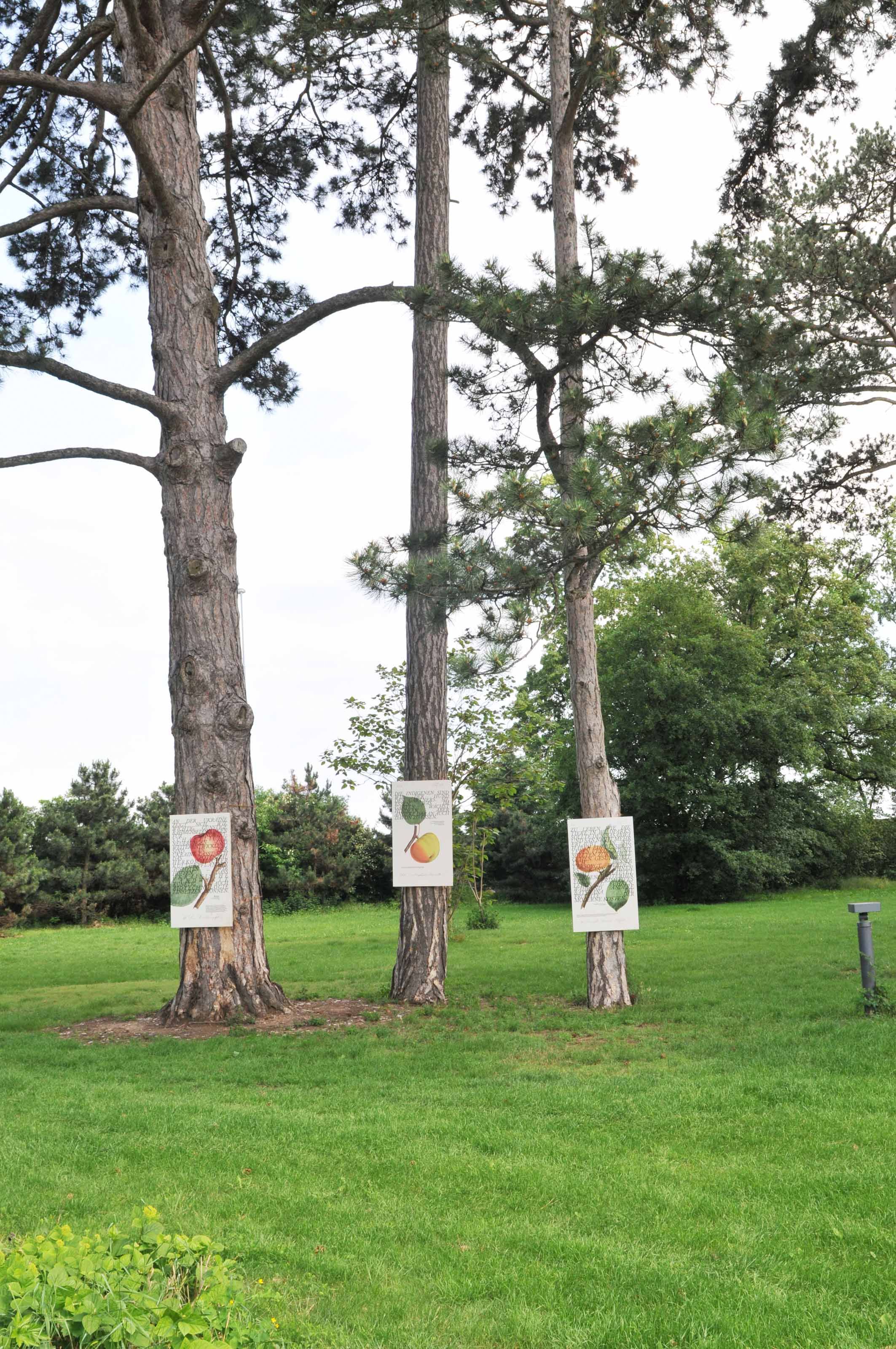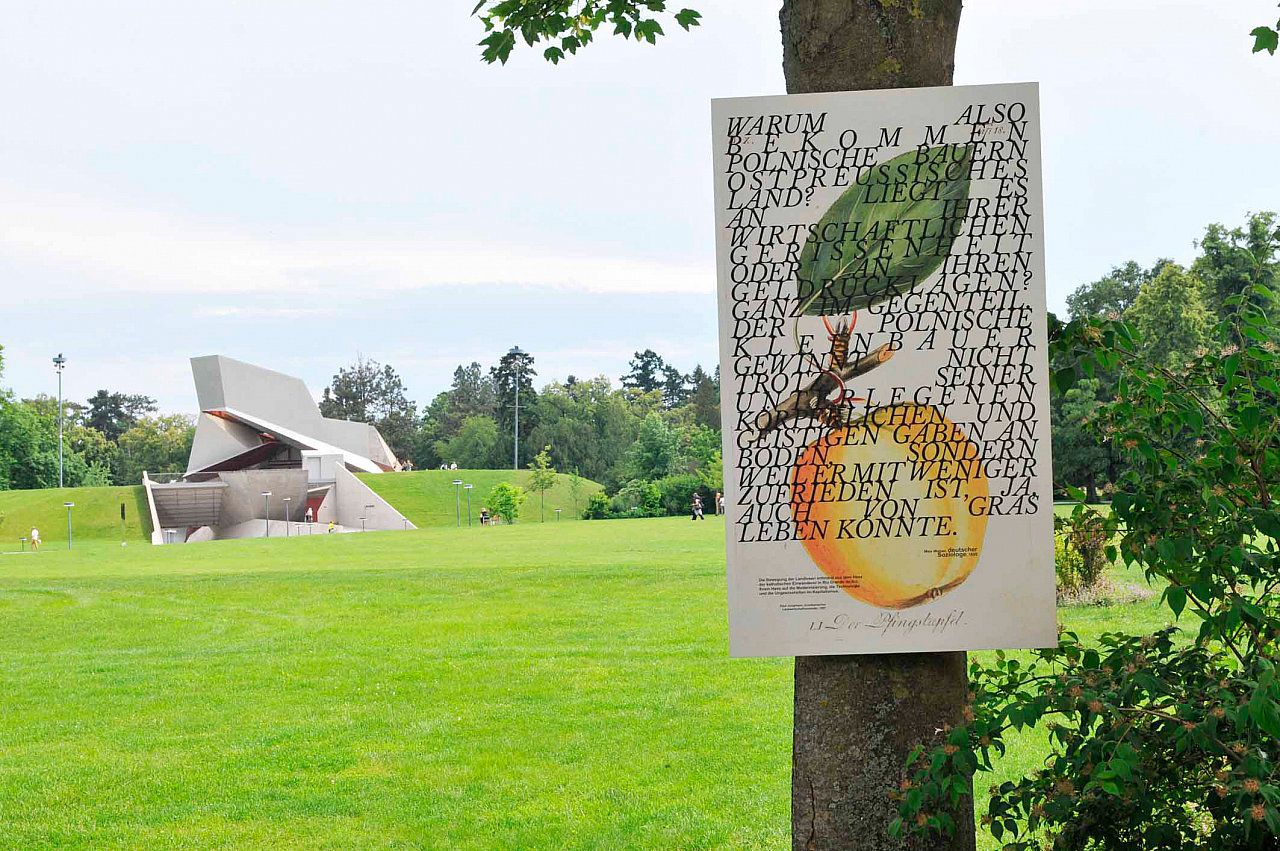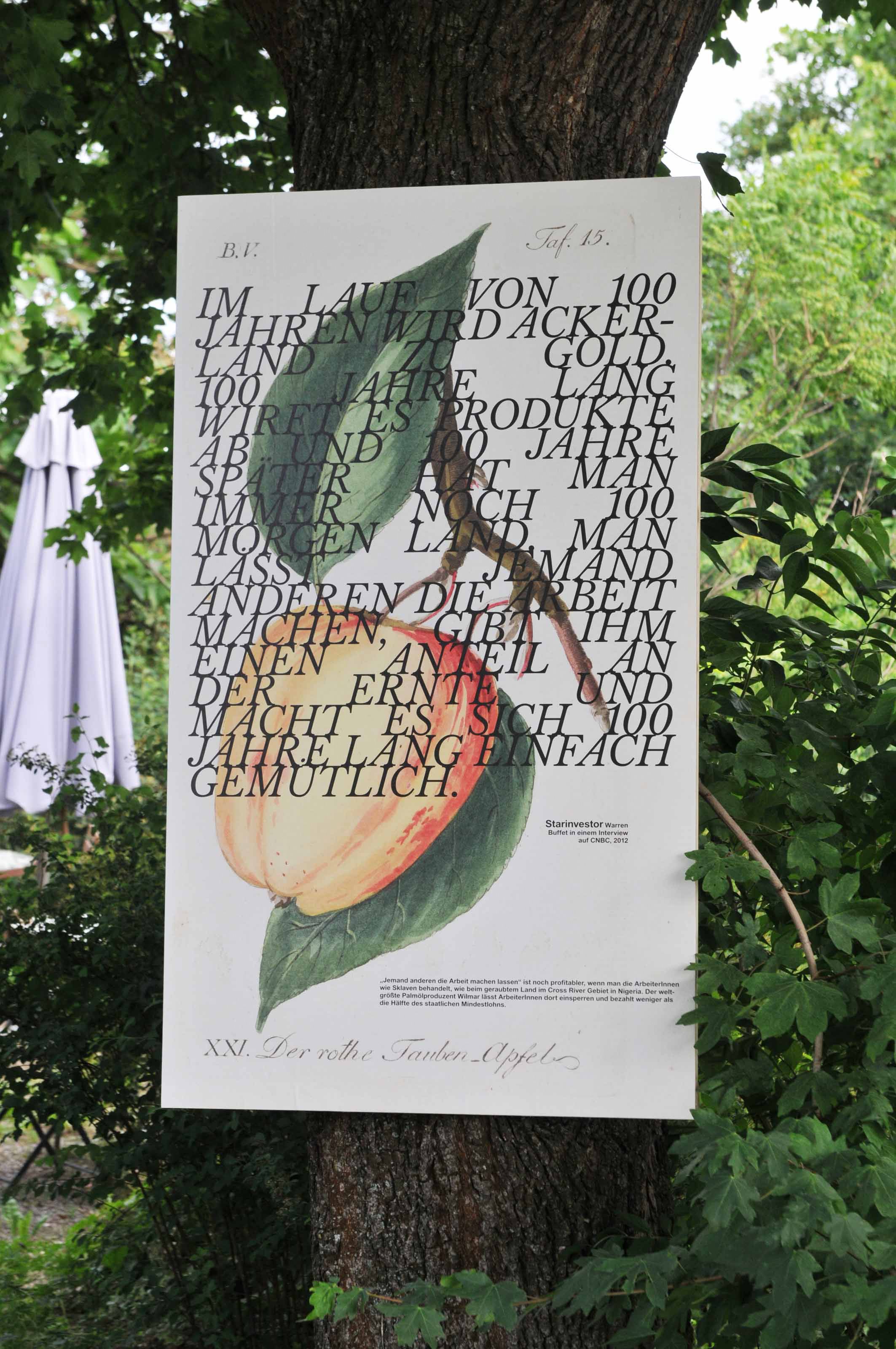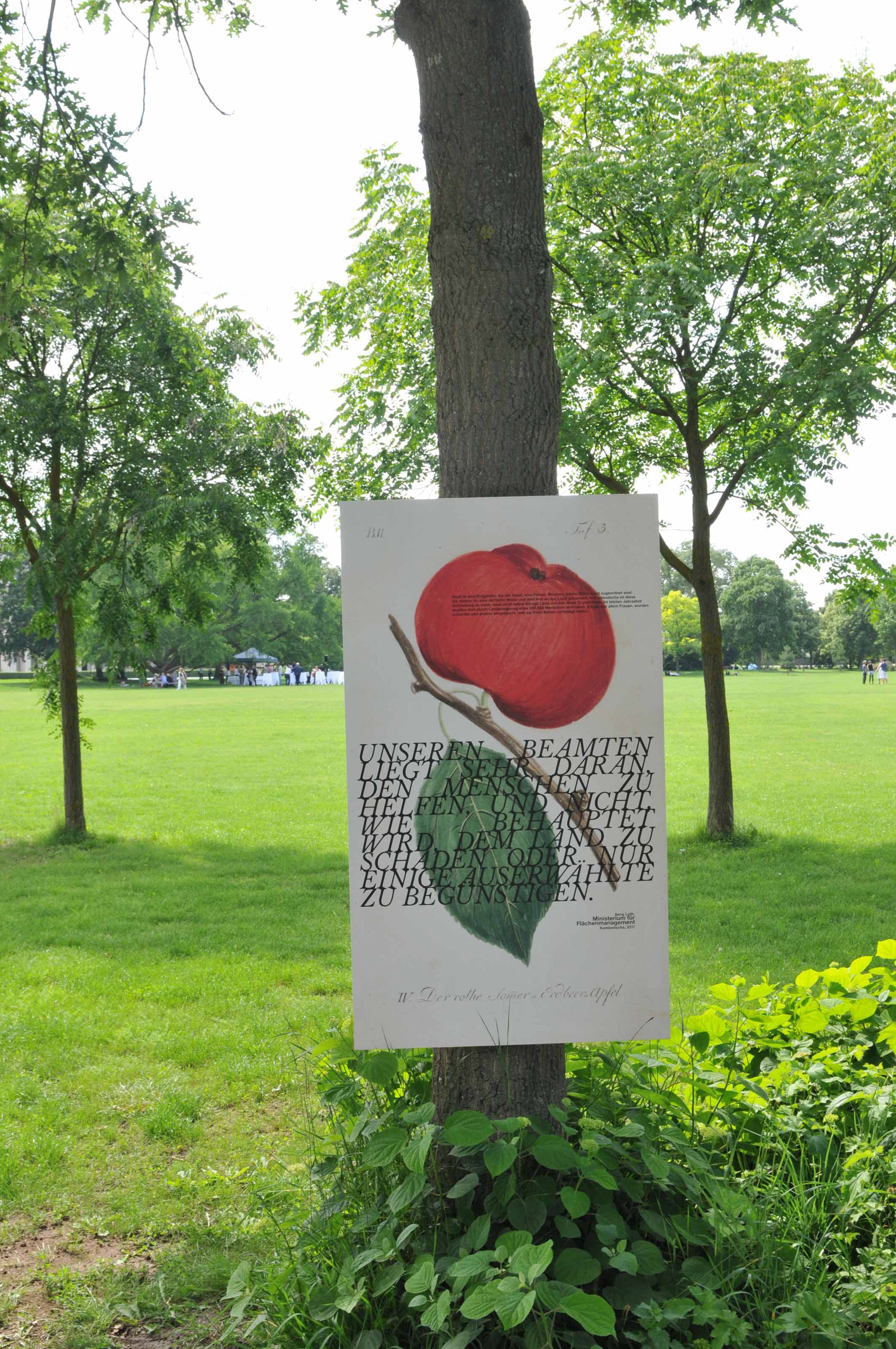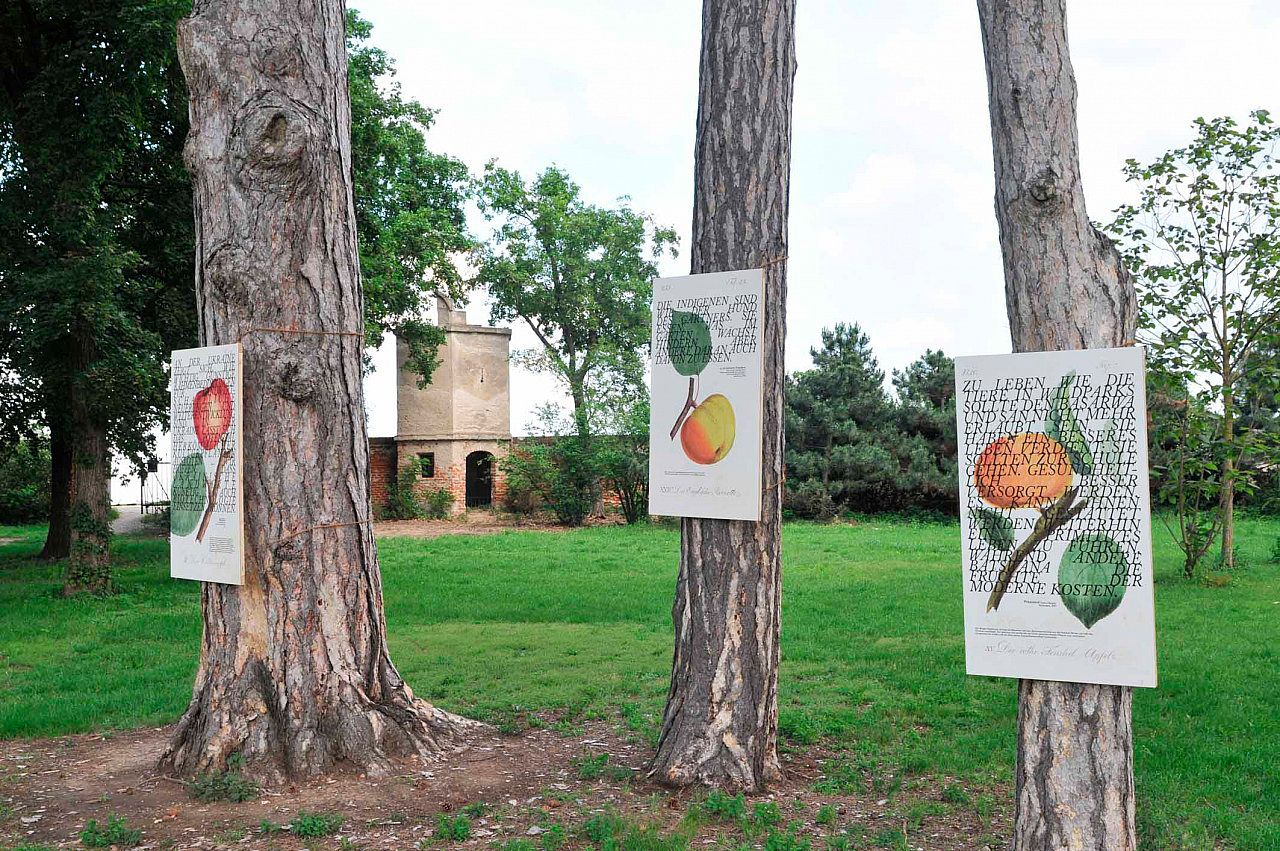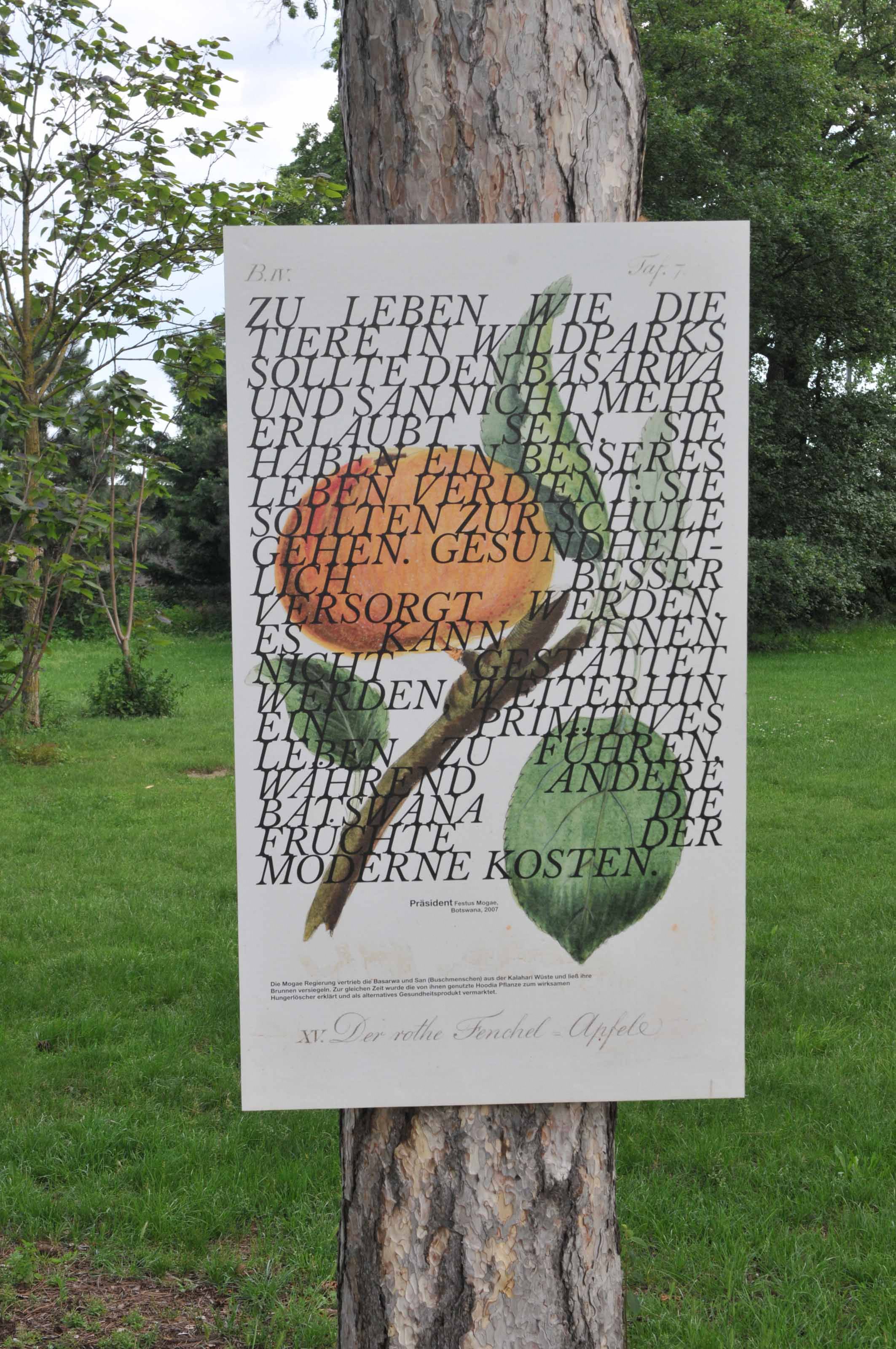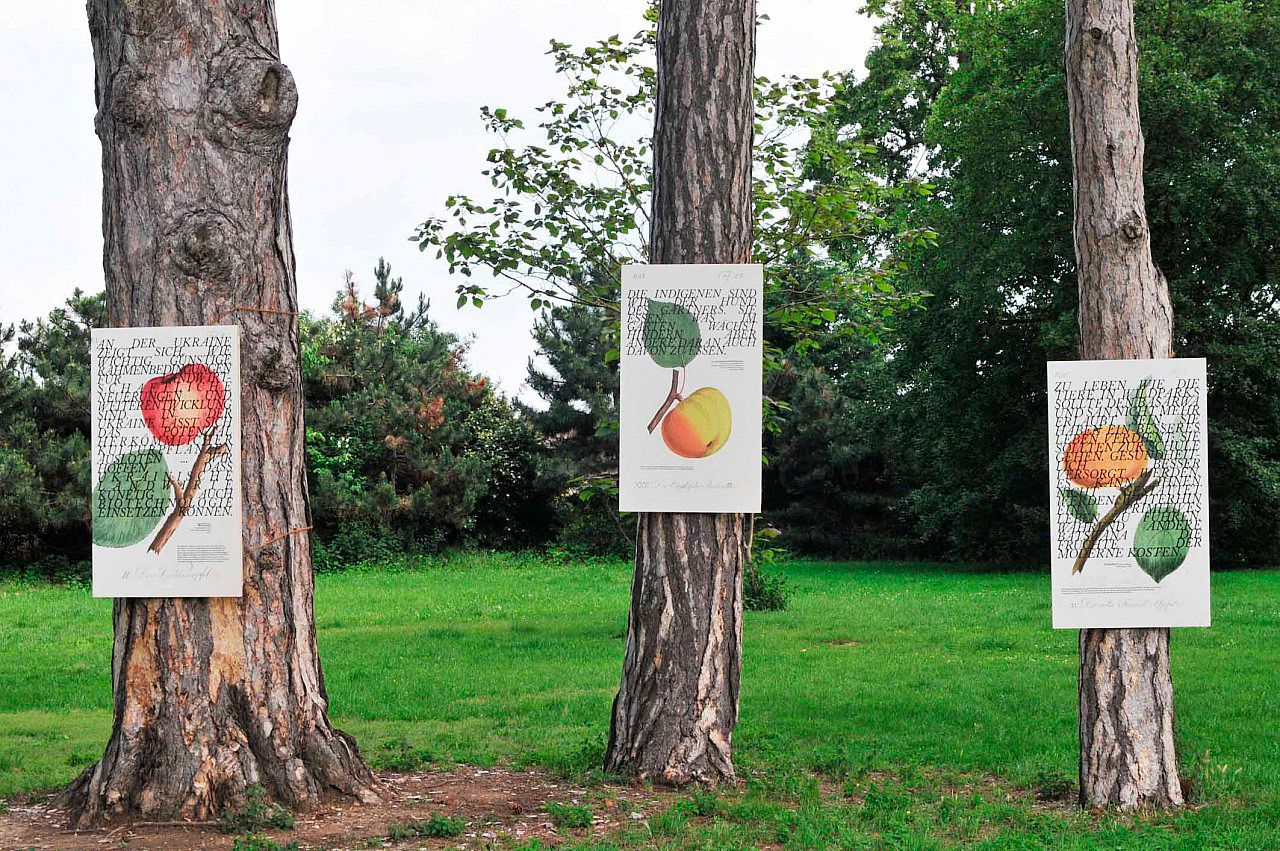Counterpoints II
BackArtists
- With
Information
In the summer of 2018, the art project COUNTERPOINTS. Kunst im Park took place in Grafenegg Castle Park for the second time. Temporary installations by the artists Edith Dekyndt and Ines Doujak acted as counterpoints to the park, castle, auditorium, and open air stage. By focusing on certain aspects of this particular site, its function, and its history, the artists expanded the historic field of reference of the 300-year-old English garden to include today’s global discourses. The sound sculpture Harmomnemonics was performed by the group Britschgi/Eberle/Reissner/Stickney on May 27, 2018.
Contributors
- Kuration
Contributions
Ines Doujak
„Landgrabbing / Landraub / Landnahme“
Historically, in so-called developing and newly industrialized countries, from Africa to the Philippines, when inhabitants are forced off their land, sometimes by violent means, so that it can be leased or sold to plantations or mines and the like, this is called “land grabbing.” Between 2001 and 2010, as many as 230 million hectares of farmland changed hands this way in countries in the global South, with current and long-term devastating consequences for feeding local populations. Ines Doujak addressed this rapidly increasing practice of land grabbing, which occurs regardless of who owns the land, in a temporary installation in Grafenegg Castle Park in the summer of 2018. She created a path resembling an educational trail dedicated to pomology (the botanical study of fruit) that leads visitors through the castle park. At several stations along the way, she attached 70x120-centimeter panels to the trunks of 38 trees that displayed aesthetically pleasing drawings of heritage apples. These replicas of old book illustrations showed different apple strains, some of which no longer exist. On closer inspection, visitors quickly realized that the panels were not so idyllic after all. Printed over the pictures were original quotes by land grabbers and their critics from the last 400 years about the dispossession and displacement of rural populations all over the world, especially at the hands of large companies, states, and investors. For example, one passage read: “We will import grain, all of Europe depends on grain imports ... We’ll supply the Ukrainians with scarves, glass beads and everything that colonial peoples like” (Hitler’s Table Talk 1941-1944, 17 September 1941). Each quote was explained or commented on in a footnote. Through the quotes and historical apple strains, the artist raised visitors’ awareness of the destruction of plant diversity—also as a result of land grabbing through single crop farming—, the installation painted a picture of the unfathomable greed that causes immense suffering in the world.
“Land unites key aspects of society’s relationship to nature, like nutrition, mobility, housing, and energy,” said Ines Doujak. This work was meant to demonstrate how the practice of land grabbing is not a recent phenomenon, but “rather a historically specific manifestation of a process in which society’s use of nature is inseparably connected to colonial and post-colonial relations of power, domination, and exploitation.” To this she added that “the access to land and its control [is] not only the result of a global food price, climate, and financial crisis [but] the manifestation of this process.”
Roman Britschgi, Christian Eberle, Jörg Reissner, Pamelia Stickney
„Harmomnemonics"
Harmomnemonics was created for COUNTERPOINTS II by Roman Britschgi in collaboration with Christian Eberle, Jörg Reissner, and Pamelia Stickney. It was performed in Grafenegg Castle Park as an ephemeral sound sculpture on May 27, 2018. The title was a combination of “mnemonic” (from the Greek word for “memory”) and the word “harmony,” meaning a symmetrical balance between tones.
With the castle, which was remodeled and expanded in the Gothic style of 19th century English castles, and the romantic landscape garden as a backdrop, the musicians collaged, constructed, layered, nested, and expanded musical structures on a contrabass, drums, a glockenspiel, a guitar, a sequencer, a theremin, and a cello. Using patterns (recurring harmonic or rhythmic structures), loops (sequences that are repeated unchanged), and samples (further developments of existing musical sequences), the musicians exposed the different layers of musical phenomena and reflected on their structural characteristics. Playing only electronic instruments at first, a transformative processes was set in motion in which central motifs changed and evolved through the use of acoustic instruments. Harmomnemonics was a musical exploration of structures and repetitions, of consonance and permanent change. Grounded in interactive processes borrowed from nineteenth-century architectural eclecticism, the performance set counterpoints of a sculptural quality both within its own composition and in relation to the castle and the art projects in the castle park.
Edith Dekyndt
“bully missy queeny tipsy benji teddy”
For one month during the Grafenegg music festival in the summer of 2018, a young man dressed in a traditional Austrian costume took a walk through the park every evening before the concerts began. It was not clear where the young man with the leather pants came from—perhaps from another era? His outfit was inspired by traditional rural costumes, which are currently experiencing a romantic revival among those who identify with a certain geographical area and nation. The young man was followed by three drones flying overhead that filmed his walks past the concert hall and the open air stage. The films could be seen on a screen in the lobby of the concert hall. Edith Dekyndt’s staged performance acted as a reminder of the six dogs (Bully, Missy, Queeny, Tipsy, Benji, and Teddy) that used to belong to the castle owners. Over the years, the dogs were buried in a small canine cemetery in the park with a sculpture of a spaniel at its center. The artist calls this small cluster of graves the “necropolis of a silent pack.” Dekyndt brought the dogs, who used to roam all corners of the park when they were alive, back to life, transporting their personalities into the twenty-first century in the form of small robots resembling comical animals being taken for a walk in the air. Driven by her fascination for the mysteries of everyday life, in this project the artist referred to a story that was passed down orally about Commander Shukovsky, who was in charge of Grafenegg during the Soviet occupation (1945–1955). He planned to convert the English park into farmland, but his wife, Mrs. Shukovskaya, was very fond of her dog and loved their walks in the castle park. For this reason, she allegedly prevented him from realizing his plans. But was the castle park really saved by Mrs. Shukovskaya? As an attentive observer of everyday processes, Dekyndt couldn’t resist asking herself this question. She let this story from a time from which no written documents survive be retold through this mysterious, silent protagonist as a kind of novella in which the picturesque qualities of the park as an accessible natural landscape painting were translated into a chronological sequence.
Beneath the surface, the performance was actually designed as an open-ended experiment in human interaction with artificial intelligence. As stereotypical as the walks appeared, there was no repetition involved. The drones continued to learn new things every day with the help of a three-dimensional scanning and assessment method based on the automation of intelligent behavior. The more perfect the walks became, the more the drones internalized the sequence of movements of their master in a continuous learning process. While they flew into trees or strayed on the first walk, they became increasingly “tame” day by day, and in the end, they heeled their master, as if on a leash. However, what may have looked comical to some observers was perhaps threatening to others, the flipside of the scenario being how our personal freedoms are constantly being restricted through the increasing surveillance in our digital world.
